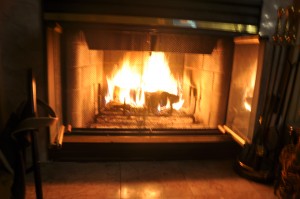At one moment on a Saturday afternoon, I was hosting an e-mail friend from Sweden who was attending a summer course near us. We drove up the coast and then came back to our house, where we planned to go to the local dairy for ice cream.
When we got home, my husband pulled me aside and told me quietly that my mother had called while I was out. My father had died. I had never seen the look on Jeff’s face before the day that Daddy’s death put it there, but I knew not to ask if there were a mistake or a misunderstanding. My father’s death was on his face.
Because of Joseph’s need for unchanging routine to ease his autism-related anxieties, I took the train for the day-long trip home to bury my father. Because it was the only thing on my mind, I shocked numerous fellow travelers who asked polite questions with the response I was going home to bury my father. Anything other than honesty, even blunt honesty, was impossible.
My mother asked me to go with her to the attorney’s office. We were met by a gentle olderwoman who introduced herself as his assistant and who said she would walk us through the initial paperwork. She started by reaffirming the basics—my parents’ names and birth dates, names and birthdates for their children, things we could easily remember even in shock.
When she asked if I had any children, I automatically said I had one child, a boy. First name Joseph, then middle name, date of birth, etc. Then she smiled a little wider and said it must be wonderful to have a six-year-old, with the joys of seeing him start school, play more games, learn to read. She stopped smiling and I just stared, having no idea how to describe Joseph.
{…He has more diagnoses than I have fingers. He is obsessed with elevators and continually opens and closes his hands in front of his face as if they are elevator doors. He isn’t toilet trained. I worry he never will be. Actually, that’s my life. I worry…}
My mother came to my rescue, saying “He has medical problems.” I thought a moment and decided honesty deserves honesty. I tried to explain my son. I struggled to explain my sunny and stubborn child, the medical riddle who was puzzling an ever larger number of experts in three of the most prestigious hospitals in the world.
The lady saved both of us. She said simply that her daughter had died and she was raising her grandson. She shrugged her shoulders, noting he was now a teenager. She added quietly that she was trying to cope, to get over the loss of her daughter.
That hit a well of words. I said that I believed we never get over the real tragedies in life, the deaths and other losses, the diseases and injuries, the dreams that are killed even while they are blooming. I think of such things, the death of a daughter, the birth of a medically complex, disabled child, as boulders that are dropped on us. At first we struggle not to be crushed underneath. At some point we find ourselves trying to walk while carrying a heavy rock. Eventually, if we are lucky, we are no longer trying to live while struggling with “it.” Instead, we realize we are different ourselves. We are living. We are living with our tragedies built into our bones.
I have tried to write this essay for over a year, never knowing how to finish it. Then I remembered that I have always closed public speaking engagements by saying that we have been tempered by fire (epilepsy, cancer, a disabled child, mental illness, depending on what drew an audience together), but we are stronger, we are community, not despite that fire, but because of it.
Recently, I looked up the term tempered steel in an encyclopedia. Steel is tempered, strengthened, not by purifying it, but by adding impurities that make the mix of iron and other metals less hard, less brittle. The steel is strengthened by making it a bit weaker. The force that once would have broken it causes it to bend but not break.
This is what the tragedies of life do for us. If we heal, if we allow ourselves to be tempered, we are not harder or more unyielding. We are stronger because we know how far we can bend without breaking. We may struggle for a long time with an intensity greater than we could have imagined, but we get back up. We are changed. We carry our past in our bones, but our skeletons work according to their design. We stand, we walk, we dance. We live. And when we do that, we can bring our loved ones along and be stronger for them and for ourselves.

